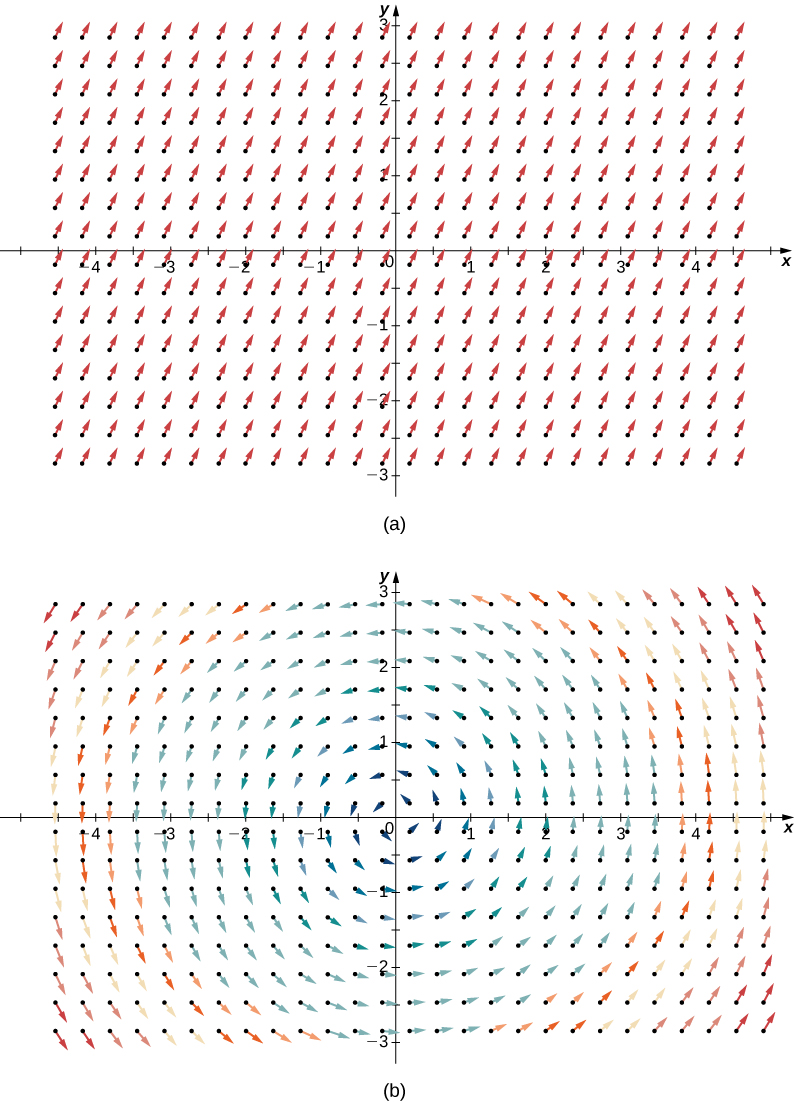| << Chapter < Page | Chapter >> Page > |
In this section, we examine two important operations on a vector field: divergence and curl. They are important to the field of calculus for several reasons, including the use of curl and divergence to develop some higher-dimensional versions of the Fundamental Theorem of Calculus. In addition, curl and divergence appear in mathematical descriptions of fluid mechanics, electromagnetism, and elasticity theory, which are important concepts in physics and engineering. We can also apply curl and divergence to other concepts we already explored. For example, under certain conditions, a vector field is conservative if and only if its curl is zero.
In addition to defining curl and divergence, we look at some physical interpretations of them, and show their relationship to conservative and source-free vector fields.
Divergence is an operation on a vector field that tells us how the field behaves toward or away from a point. Locally, the divergence of a vector field F in or at a particular point P is a measure of the “outflowing-ness” of the vector field at P . If F represents the velocity of a fluid, then the divergence of F at P measures the net rate of change with respect to time of the amount of fluid flowing away from P (the tendency of the fluid to flow “out of” P ). In particular, if the amount of fluid flowing into P is the same as the amount flowing out, then the divergence at P is zero.
If is a vector field in and and all exist, then the divergence of F is defined by
Note the divergence of a vector field is not a vector field, but a scalar function. In terms of the gradient operator divergence can be written symbolically as the dot product
Note this is merely helpful notation, because the dot product of a vector of operators and a vector of functions is not meaningfully defined given our current definition of dot product.
If is a vector field in and and both exist, then the divergence of F is defined similarly as
To illustrate this point, consider the two vector fields in [link] . At any particular point, the amount flowing in is the same as the amount flowing out, so at every point the “outflowing-ness” of the field is zero. Therefore, we expect the divergence of both fields to be zero, and this is indeed the case, as

By contrast, consider radial vector field in [link] . At any given point, more fluid is flowing in than is flowing out, and therefore the “outgoingness” of the field is negative. We expect the divergence of this field to be negative, and this is indeed the case, as

Notification Switch
Would you like to follow the 'Calculus volume 3' conversation and receive update notifications?